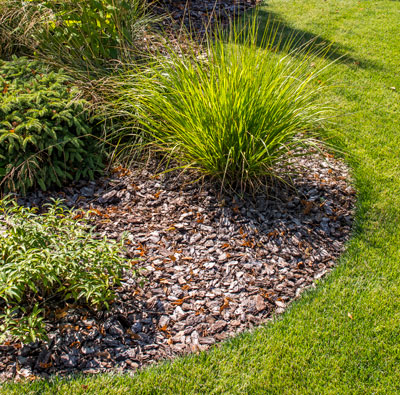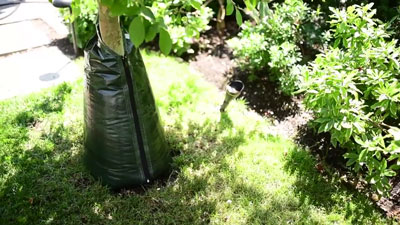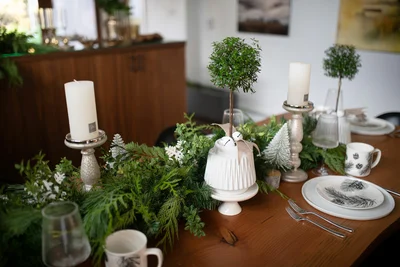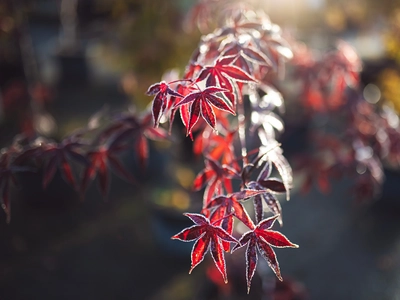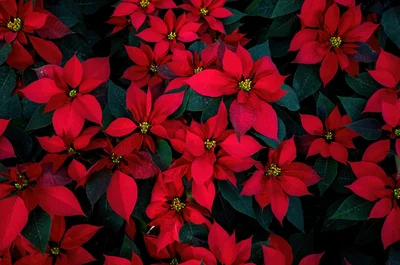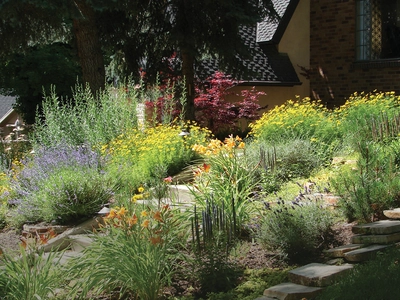
Written by Ingrid Hoff
With hot months ahead, it's time to be wise about water useage in the garden. Plus, less time watering means you have more time to enjoy your summer.
Here is a collection of tips and tricks you can use in your garden and become wiser about water.
Start off Right
If you are planning a new garden bed or are thinking of renovating an old one, then start off by planting the right plant in the right place. If you have a hot sunny spot then choose drought tolerant plants. Look for terms like “drought resistant" or "drought tolerant". As a general rule you want to look for plants that have fleshy, silvery, and/or small leaves as this is usually a sign that the plant has adapted to surviving in hot temperature, low water conditions. As an added bonus, many drought tolerant plants are excellent for attracting pollinators.

Personal favourites include:
- lavender
- nepeta
- all the sedums.
There is actually a term for this, xeriscaping; a gardening practice that aims to reduce the use of water and need for irrigation.
Note: plants need a full season of root establishment before they are considered drought tolerant.
Don’t feel left out if you have shade, there are a number of plants called ephemerals that are glorious in the spring (when water is plentiful) but then go dormant for the summer, right as the thermometer starts to climb. These include shooting stars (Dodecatheon sp.), dogtooth violet (Erythronium sp.), as well as the lovely bleeding heart (Lamprocapnos spectabilis).
Lastly, if there are some plants that are “thirsty” and you just can’t live without them, consider grouping them together. That way you can concentrated what watering you need to do over a smaller area.
Mulch, Mulch, Mulch
Mulching creates a barrier on the soil that prevents erosion, drying out, and weed growth. Find the mulch of your choice; bark, leaves, compost, stones, straw and lay it on thick (5-7cm). Just make sure to water before you mulch, you want to trap the water in the soil not the other way around.
Water the Right Way
Water less frequently, with more, so the water penetrates deeper in the soil, this will build a bit of a “water bank.” Also, water the soil, not the plant. In fact, water on the leaves just evaporates and, in some cases, can actually set up the conditions for disease. Consider drip irrigation or soaker hoses. Water in the morning, not during the full heat of the day when evaporation is at its highest. Check here for more summer watering tips.
Amp up the Organic
Organic matter acts like a sponge in the soil so the more you have the better the water retention. Add some compost, manure, Sea Soil, or even leaves and trimmings.
Embrace a Golden Lawn
Let your lawn go gold and just stop watering it. It is perfectly adapted to go dormant and turn gold, but then green up again when the rains come. Some other tips to help your lawn be less thirsty are to let it grow longer (this also helps with European chafer beetle) and to use a mulching mower.
Bag Your Trees
For the first few years young trees need a little help. Once filled, Watering Bags slowly release water at the soil level; preventing evaportion.
Bigger is Better
The bigger a container is, the more soil and therefor water it will hold. This means healthier plants and more time saved.
So, before the real heat of the summer starts consider how you want to spend your time, dragging a hose/watering can around your yard/patio or sitting back and enjoying the beauty of the garden. I know which one I prefer. Have a look around your space, is there something you can do to be wiser about water?

